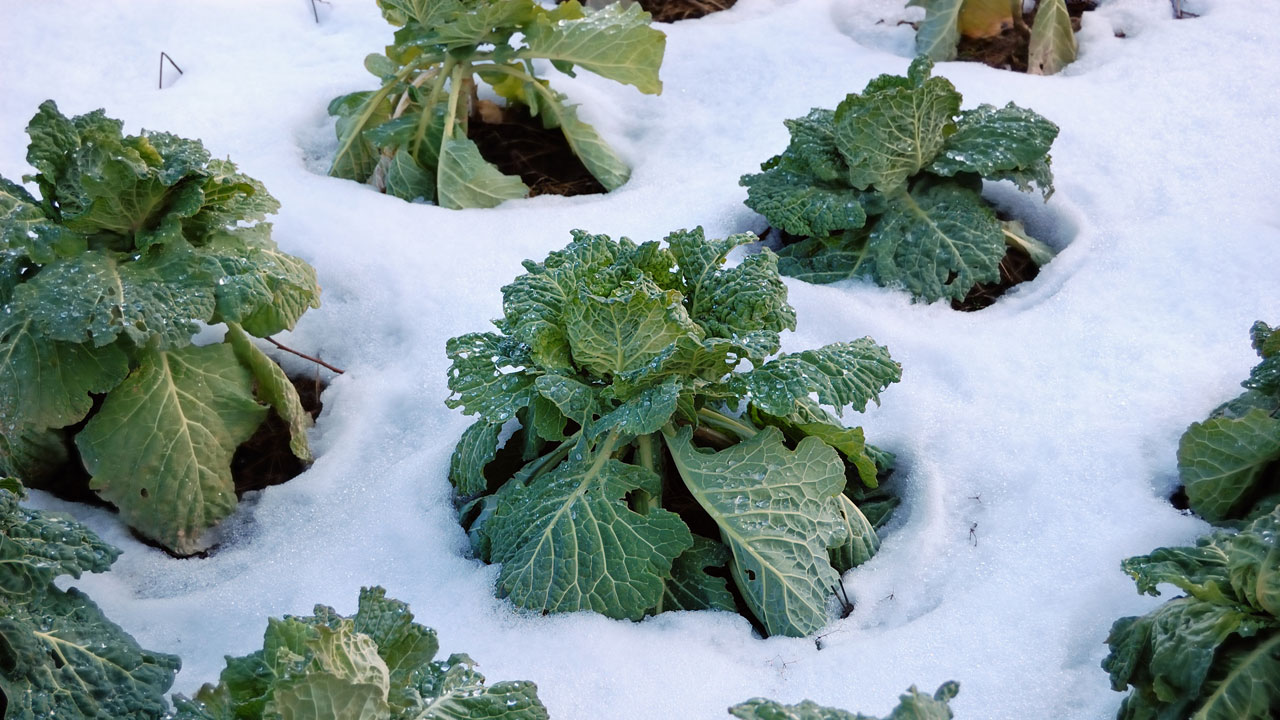Prepare Now for Winter
Nov 13th 2018
Winter happens! Every Winter the nighttime temperatures drop down into the low 20°’s or lower here in Northern California. More than half of DripWorks customers live in USDA zones 8 and 9. This area stretches from the west coast down through the southwest and across the entire southern states of the US. For these areas, we can do some final preparation work before Winter sets in.
If you have a drip system or any watering system, it is essential to winterize it before a severe freeze. Start by disconnecting your timer, filter, and pressure regulator from your faucet. Drain all the water from the timer, filter, and pressure regulator, and store them in your garage or basement where it will be warmer. Draining the drip lines and then covering the end of the lines too can be as simple as walking through your garden, disconnecting the line (or punching in an emitter) in the low spots to allow water to drain out. At the end of each drip line, open the ends until any water that might be sitting in the line has drained. When you’re finished, you’ll want to cover the start of each line where the faucet, pump, or valves are with a plastic bag and tape or cap it again. Draining your lines will protect the fittings and tubing when a freeze occurs. Some people also use compressed air to clear all the water from their drip system.
Now is also the time to trim back stems of perennial plants and flowers down to soil level. Buying plant identification stakes to put in the ground next to some of these plants so they won’t be mistakenly dug up in the spring is a good practice. For your larger perennials and smaller bushes, pruning off unwanted branches will prepare the plant for next spring’s growth. For berry vines such as raspberries, you want to cut the old fruiting vines down to the ground and leave the new growth pruned to the top trellis wire to provide fruit in the Spring and Summer. Remove all annual flowers and vegetables too as they might invite disease from taking hold in your garden. If you have young fruit trees, check online about proper pruning methods for each specific type of tree. Two of the best pruners available are the Felco #2 pruners (AFELC) and the Fiskars Telescoping Power-Lever Bypass Lopper (ATBL) that will do easy work of what used to be a difficult chore. Don’t forget to wrap their bark from the ground up to its first branches to protect them from extreme frost and harsh winds. You can find tree wrap at your local nursery.

Late fall and winter vegetable gardening need to be under a blanket of GCI Row Cover or on a high tunnel. The warmer temperatures under this protective cover will protect any late plantings and allow the germination of seeds as well as seedling growth. You may also want to prepare your garden for an early start next spring by purchasing some row cover now for use as soon as the daytime temperatures allow you to go out into the rising temperatures of March. Purchasing and setting up a high tunnel now is an excellent investment that will enable your gardening juices to flow earlier than ever.

Plant garlic now, plant each clove about six inches apart and at least three to four inches deep. Garlic is one of the easiest crops you can grow in the fall. Other vegetables to consider for a winter garden are kale, carrots, and lettuce. For your garden beds, planting a soil enhancing cover crop of red clover will add nutrients once you turn the beds in the spring. Start by adding a layer of compost or bagged garden soil over the red clover seed. Use heavyweight galvanized loop hoops (AGHOOP) to help support the row cover, and U-shaped hold down staples (SUHD) to keep the row cover in place.
Mulch, mulch, mulch! I can’t say it enough. There are many reasons to mulch. Here are a few: suppresses weeds, conserves moisture, moderates soil temperature, and it protects the soil from erosion. If you use an organic mulch, you’ll be building your soil too! As mulch breaks down, it becomes soil. There are microorganisms in the soil that help plants take up nutrients. They don’t like to bake in the sun or freeze in the winter. It’s important to choose the right material for your mulch because some may become just the right habitat for pests and disease. Some of the elements that are beneficial and readily available are leaves, grass clippings, pine straw, fir bark, chicken manure, and coffee grounds. Make sure that all mulches used in the vegetable garden or under fruit trees are organic.

If it’s not too late in your area, now may be the last opportunity to get out into your yard and garden and prepare them for the harsh winter ahead. Because of all the hard work you do now, you can rest easy by the warmth of your fireplace. Your efforts will pay off in 2019.

